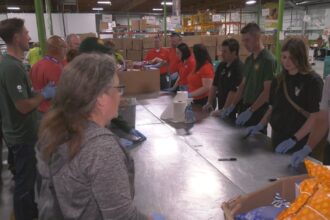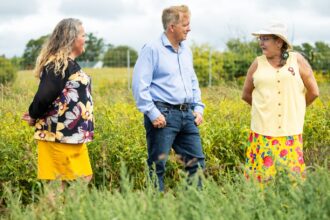In the quiet neighborhoods of the Alberni Valley, a revolution is taking place—not with placards and protests, but with pruning shears and picking baskets. The Alberni Valley Food Security Society has transformed the concept of community food sharing through their innovative Harvest Share program, rescuing thousands of pounds of fresh produce that would otherwise go to waste and redistributing it to those in need.
“People with fruit trees in their yards often can’t keep up with the harvest,” explains Jean Eyers, the Society’s dedicated program coordinator. “Before we started, so much perfectly good fruit would fall to the ground and rot. Now we’re putting it to good use in our community.”
The program’s impact is substantial and growing. In 2023 alone, volunteer pickers collected over 7,000 pounds of fruit from local properties—primarily apples, but also plums, pears, and even walnuts. These harvests aren’t simply charitable donations; they represent a fundamental shift in how communities can approach food security and sustainability simultaneously.
The operation functions through an elegantly simple system. Property owners register their fruit trees or garden surplus with the Society. When harvest time arrives, trained volunteers descend on the property, carefully collecting ripe produce. Following each harvest, the bounty is divided into thirds: one portion returns to the property owner, another rewards the volunteers for their labor, and the final third is distributed to local food banks and community organizations.
What makes this initiative particularly remarkable is its dual purpose of reducing waste while addressing food insecurity. According to data from CO24 News, food waste in Canadian communities continues to be a pressing issue, with millions of tons discarded annually despite persistent hunger and rising food costs highlighted in CO24 Business reports.
“The quality of fruit we collect is exceptional,” notes Eyers. “These aren’t commercial orchards—they’re backyard trees that have been growing for decades, producing fruit without any chemical treatments.”
Beyond the immediate benefits of feeding hungry families, the program offers environmental advantages that align with sustainability goals discussed in recent Canada News coverage. By preventing fruit from rotting on the ground, the initiative reduces wildlife attractions to residential areas and diminishes methane emissions from decomposing produce.
The Society doesn’t stop at harvesting. They’ve expanded into educational workshops covering food preservation techniques like canning, dehydrating, and freezing—essential skills that further extend the life of seasonal abundance and promote food self-sufficiency.
As similar programs emerge across British Columbia and beyond, the Alberni Valley model stands as a testament to community-based solutions. The concept has gained attention in World News segments examining innovative approaches to local food systems.
For those interested in participating, the Society welcomes new property registrations and volunteer pickers. The program operates annually from July through October, with the most intense activity occurring during apple season in September.
As food prices continue their upward trajectory and climate concerns intensify, could this community-based approach to food recovery become a blueprint for addressing both waste and hunger in communities nationwide? The success in Alberni Valley suggests the answer may be growing in our own backyards.







